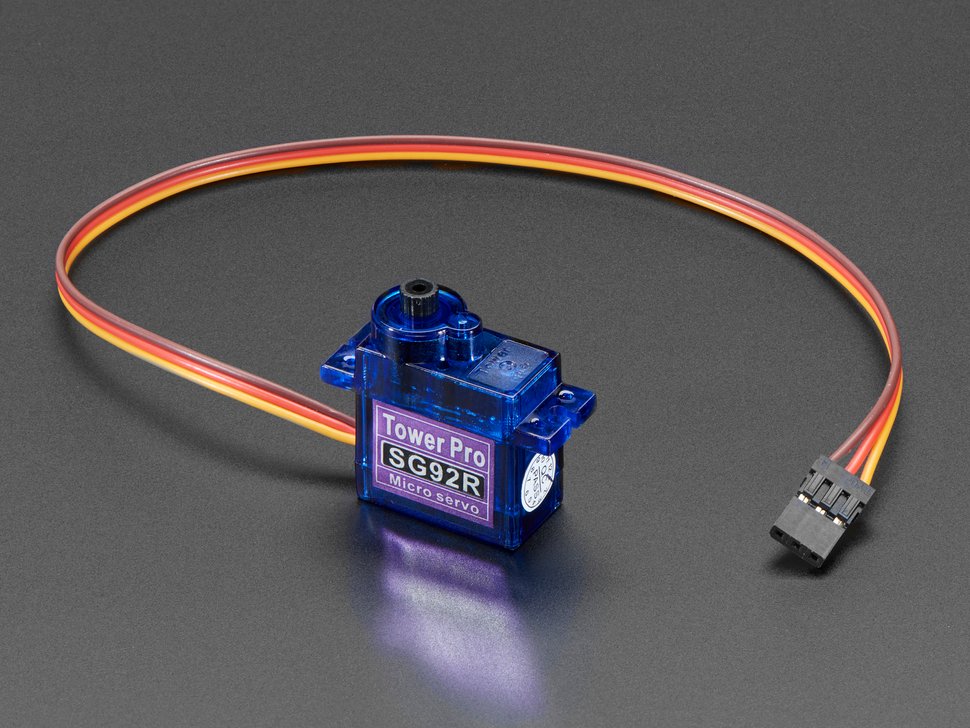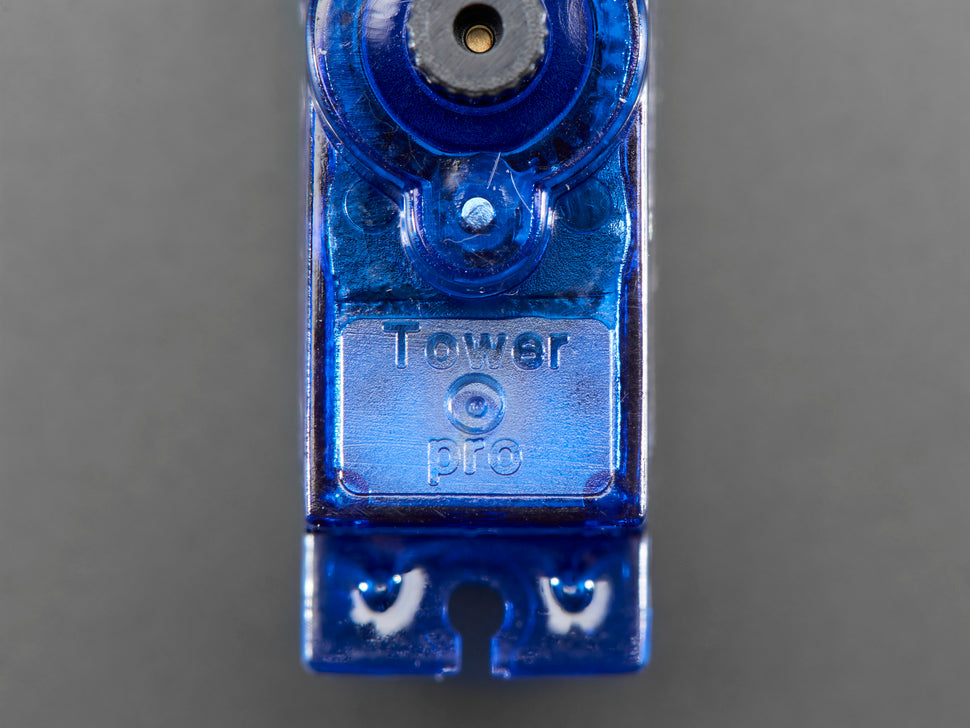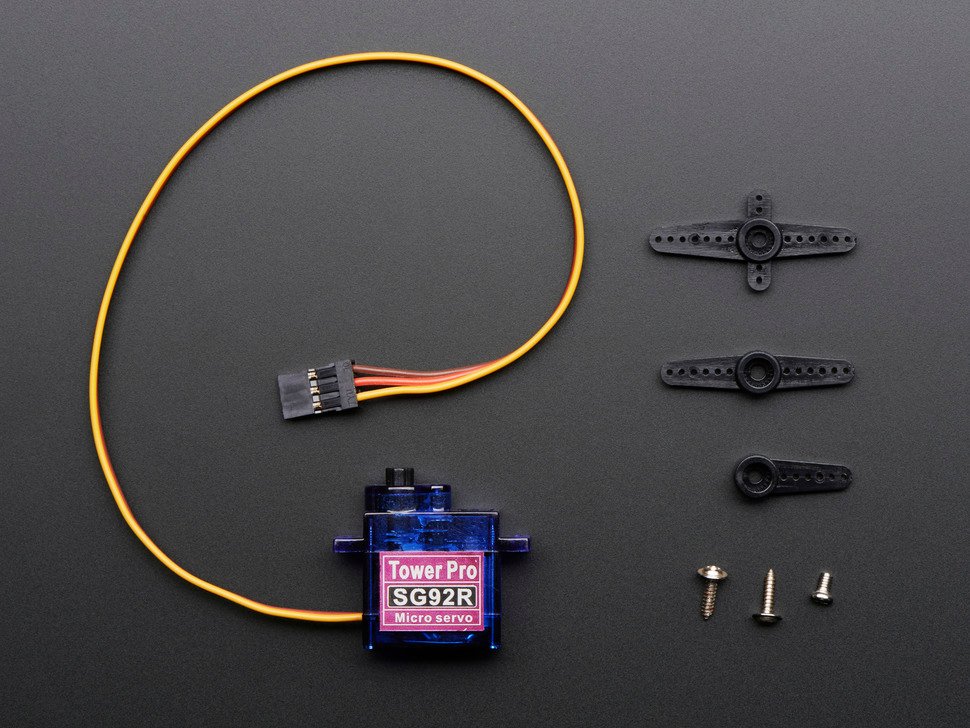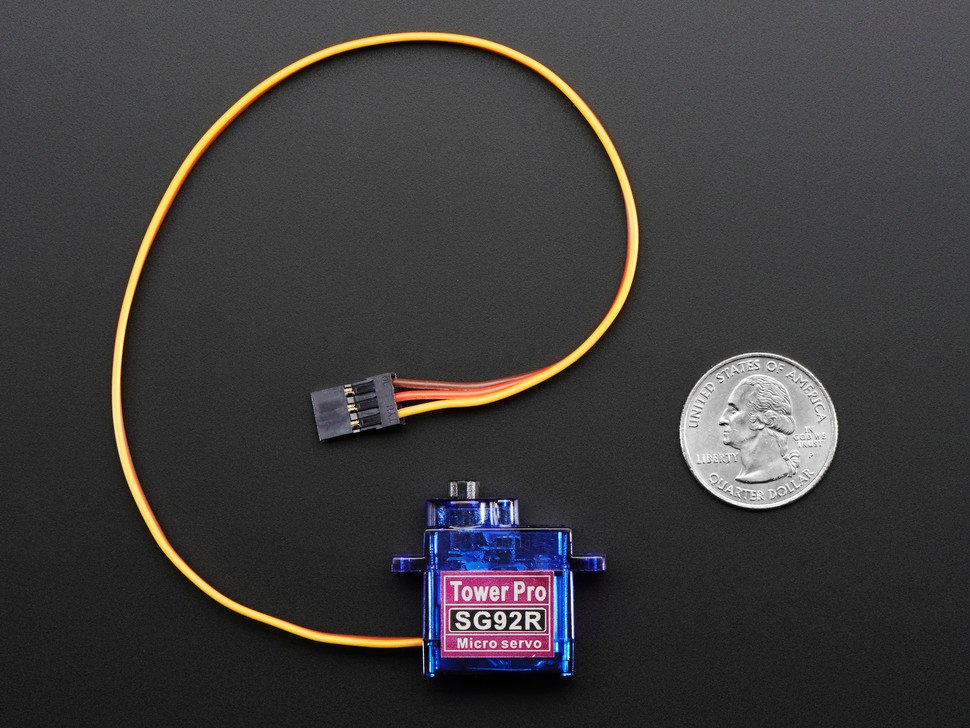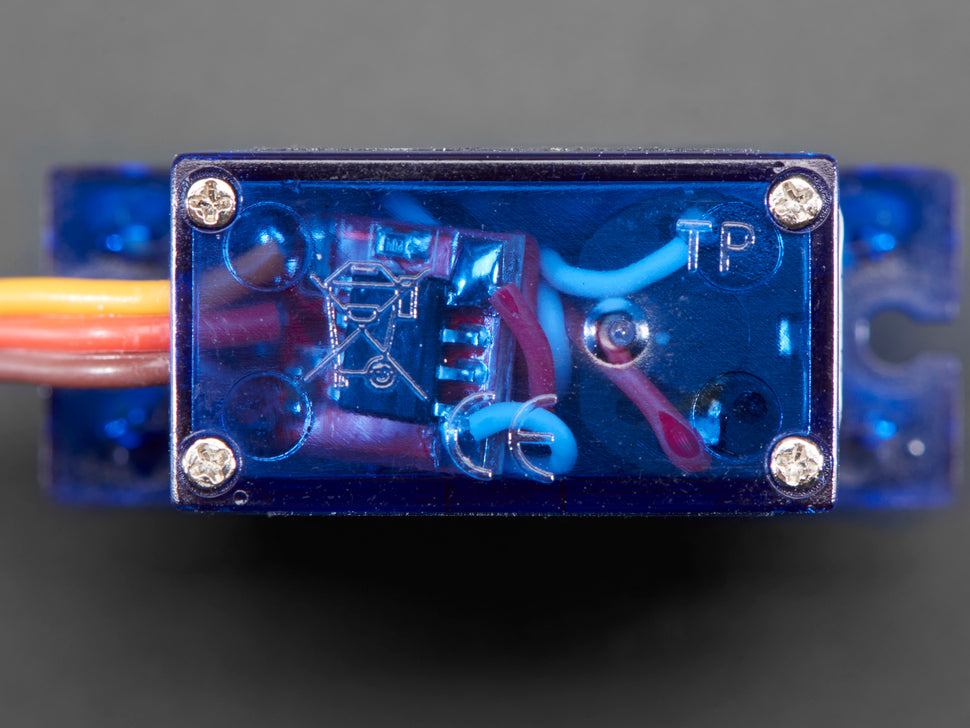Adafruit Micro servo
Winzig kleine Servos können sich um ca. 180 Grad drehen (90 in jede Richtung) und funktionieren genau wie die Standardtypen, die Sie gewohnt sind, nur kleiner. Sie können jeden Servocode, jede Hardware oder Bibliothek verwenden, um diese Servos zu steuern. Gut für Anfänger, die etwas bewegen wollen, ohne einen Motorcontroller mit Rückkopplung und Getriebe zu bauen, vor allem, weil er in kleine Räume passt. Natürlich ist es nicht annähernd so stark wie ein Standard-Servo. Funktioniert hervorragend mit dem Motor Shield für Arduino oder durch einfaches Verdrahten mit der Servo-Bibliothek. Wird mit ein paar Hörnern und Hardware geliefert.
Um mit einem Arduino zu steuern, empfehlen wir, den orangefarbenen Steuerdraht an Pin 9 oder 10 anzuschließen und die Servo-Bibliothek zu verwenden, die in der Arduino-IDE enthalten ist (siehe hier für eine Beispielskizze). Die Position "0" (1,5ms Impuls) ist die Mitte, "90" (~2ms Impuls) ist ganz rechts, "-90" (~1ms Impuls) ist ganz links.
Beachten Sie, dass die Standard-Servo-Impulsbreiten (normalerweise 1ms bis 2ms) möglicherweise nicht die vollen 180 Grad Bewegung ermöglichen. Prüfen Sie in diesem Fall, ob Sie Ihren Servo-Controller auf benutzerdefinierte Impulslängen einstellen können und versuchen Sie 0,75ms bis 2,25ms. Sie können kürzere/längere Impulse ausprobieren, aber seien Sie sich bewusst, dass Sie Ihr Servo kaputt machen könnten, wenn Sie zu weit gehen!
TECHNISCHE DETAILS
- Größe : 23x11x29 mm
- Spannung : 4,8V nominal (3V bis 6V DC)
- Gewicht: 9g / 0.32oz
- Geschwindigkeit : 0,1 sec/60 Grad (bei 4,8V)
- Drehmoment : 2,5 kg-cm
- Arbeitstemperatur: -30C~60C
- Teflonbuchse, 19cm Draht, kernloser Motor, Servoarme & Schraube enthalten
Adafruit Micro servo
Tiny little servos can rotate about 180 degrees (90 in each direction) and work just like the standard types you are used to, only smaller. You can use any servo code, hardware or library to control these servos. Good for beginners who want to move things around without building a motor controller with feedback and gearing, especially since it fits into small spaces. Of course, it's not nearly as powerful as a standard servo. Works great with the Motor Shield for Arduino or by simply wiring it up with the servo library. Comes with a couple of horns and hardware.
To control with an Arduino, we recommend connecting the orange control wire to pin 9 or 10 and using the servo library included in the Arduino IDE (see here for an example sketch). The "0" position (1.5ms pulse) is the center, "90" (~2ms pulse) is on the far right, "-90" (~1ms pulse) is on the far left.
Note that the standard servo pulse widths (usually 1ms to 2ms) may not allow the full 180 degrees of movement. In this case, check if you can set your servo controller to custom pulse widths and try 0.75ms to 2.25ms. You can try shorter/longer pulses, but be aware that you may break your servo if you go too far!
TECHNICAL DETAILS
- size : 23x11x29 mm
- Voltage : 4.8V nominal (3V to 6V DC)
- weight : 9g / 0.32oz
- Speed : 0.1 sec/60 degrees (at 4.8V)
- Torque : 2.5kg-cm
- Working temperature : -30C~60C
- Teflon socket, 19cm wire, coreless motor, servo arms & screw included.
Sicherheitsangaben
- Lesen Sie die Bedienungsanleitung sorgfältig durch, bevor Sie das Produkt verwenden.
- Stellen Sie sicher, dass alle Montage- und Installationsanweisungen des Herstellers sorgfältig befolgt werden.
- Verwenden Sie das Produkt nur für den vorgesehenen Zweck.
- Die unsachgemäße Nutzung dieses Produkts kann zu schweren Verletzungen oder Sachschäden führen.
- Nicht für Kinder unter 10 Jahren geeignet.
- Bei unsachgemäßer Verwendung besteht eine Verletzungsgefahr.
- Dieses Produkt entspricht den geltenden Sicherheitsanforderungen der Europäischen Union.
- Dieses Produkt wurde gemäß der GPSR geprüft, die sicherstellt, dass alle relevanten Sicherheitsanforderungen für Konsumgüter eingehalten werden.
Nachverfolgbarkeitsinformationen
Jedes Produkt verfügt über eines oder mehrere der folgenden Merkmale:
- Ein CE-Kennzeichen, das die Einhaltung der Sicherheits-, Gesundheits- und Umweltschutzanforderungen der Europäischen Union anzeigt.
- Eine eindeutige Serien- oder Chargennummer, um die Nachverfolgbarkeit zu gewährleisten und bei Bedarf Rückrufaktionen zu unterstützen.
- Hersteller- und Importeurangaben für den Kundensupport und Sicherheitsanfragen.
Überwachung und Berichterstattung von Vorfällen
Für den unwahrscheinlichen Fall eines Produktproblems haben wir Verfahren implementiert, um:
- Kundenbeschwerden zeitnah bearbeiten.
- Schwerwiegende Vorfälle über das EU Safety Gate/RAPEX-System melden.
- Mit den Marktüberwachungsbehörden zusammenarbeiten, um die öffentliche Sicherheit zu gewährleisten.
Kontakt:
- Email: support [@] pi3g.com
- Telefon: 0341 / 392 858 40
Dieses Produkt ist vollständig mit allen geltenden EU-Vorschriften konform, um die Sicherheit unserer geschätzten Kunden zu gewährleisten.

